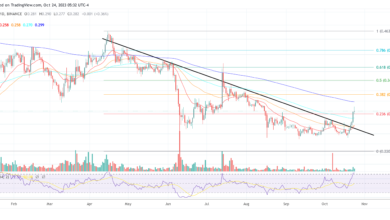Insights on how Bitcoin market recovery resembles 2016 and 2019

- In its current cycle, BTC’s market movements mimic the recovery phase from a major bear market noted in 2016 and 2019.
- There is a strong presence of long-term holders in the market.
In its latest report, on-chain data provider Glassnode has found that Bitcoin’s [BTC] current market structure resembles the recovery phase from a major bear market similar to 2016 and 2019.
Read Bitcoin’s [BTC] Price Prediction 2023-24
This is based on a model that measures the difference between the wealth held by the coin’s long-term and short-term investors and the pattern of coin rotation between both cohorts of investors.
Long-term holders and their unwavering resilience
According to Glassnode, Bitcoin’s market capitalization has historically surpassed its realized capitalization. However, this might not be the case during severe bear markets like the latter half of 2022, where BTC’s market capitalization fell below its realized capitalization.
BTC’s Realized HODL Waves metric, which tracks this trend, shows that BTC’s realized capitalization “tends to plateau or slightly draw down” during bear markets, reflecting coin transfers and revaluation to lower acquisition prices.
When the BTC market is in an uptrend, coins long-held by long-term investors are transferred to newer investors due to the influx of fresh demand. Conversely, during periods of downtrend, “paper hands” and speculators transfer coins to longer-term holders.
According to Glassnode, in the current cycle:
“The market has reached an equilibrium between these two investor groups, with a slightly positive inflow of newer investors entering the market (demand side). This resembles the conditions seen in 2016 and 2019, where the market attempted to recover from a significant bear market drawdown.”

Source: Glassnode
Glassnode assessed the behavior of BTC investors based on the age of their holdings. For long-term holders who have held their coins for over 12 months, their holdings peak during bear markets, indicating accumulation during market lows.
This cohort of investors represents price-insensitive investors who accumulated during the bear market and held through it.
According to Glassnode, BTC’s long-term investors hold more than 15% of the coin’s total capital during bear market cycles.

Source: Glassnode
As for short-term investors who have held their coins for less than 30 days, their activity is closely related to market demand. It increases during uptrends and decreases during bear markets.
“This cohort corresponds closely to the demand side, including new investors deploying fresh capital into the market,” the report noted.
To understand capital rotation in the current market, Glassnode deployed the Inter-Cycle Capital Rotation Ratio metric, which measures the difference between the two cohorts of investors.
Is your portfolio green? Check the BTC Profit Calculator
BTC’s Inter-Cycle Capital Rotation Ratio was spotted at 13%, which was similar to levels observed in 2016 and 2019.
Per Glassnode:
“This indicates that the Bitcoin supply remains strongly dominated by the HODLer cohort, with a super-majority of coins now being older than 6 months.”

Source: Glassnode





